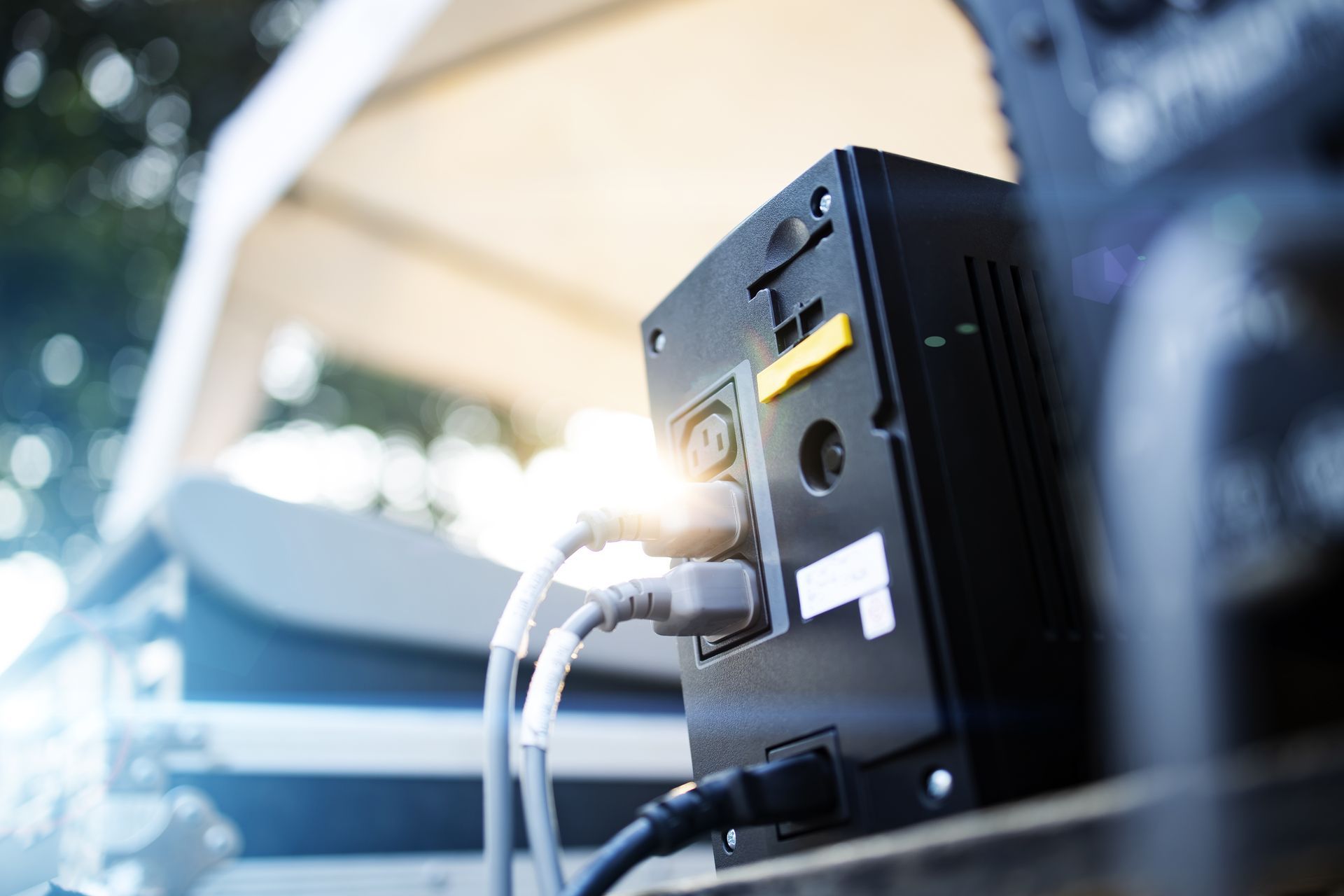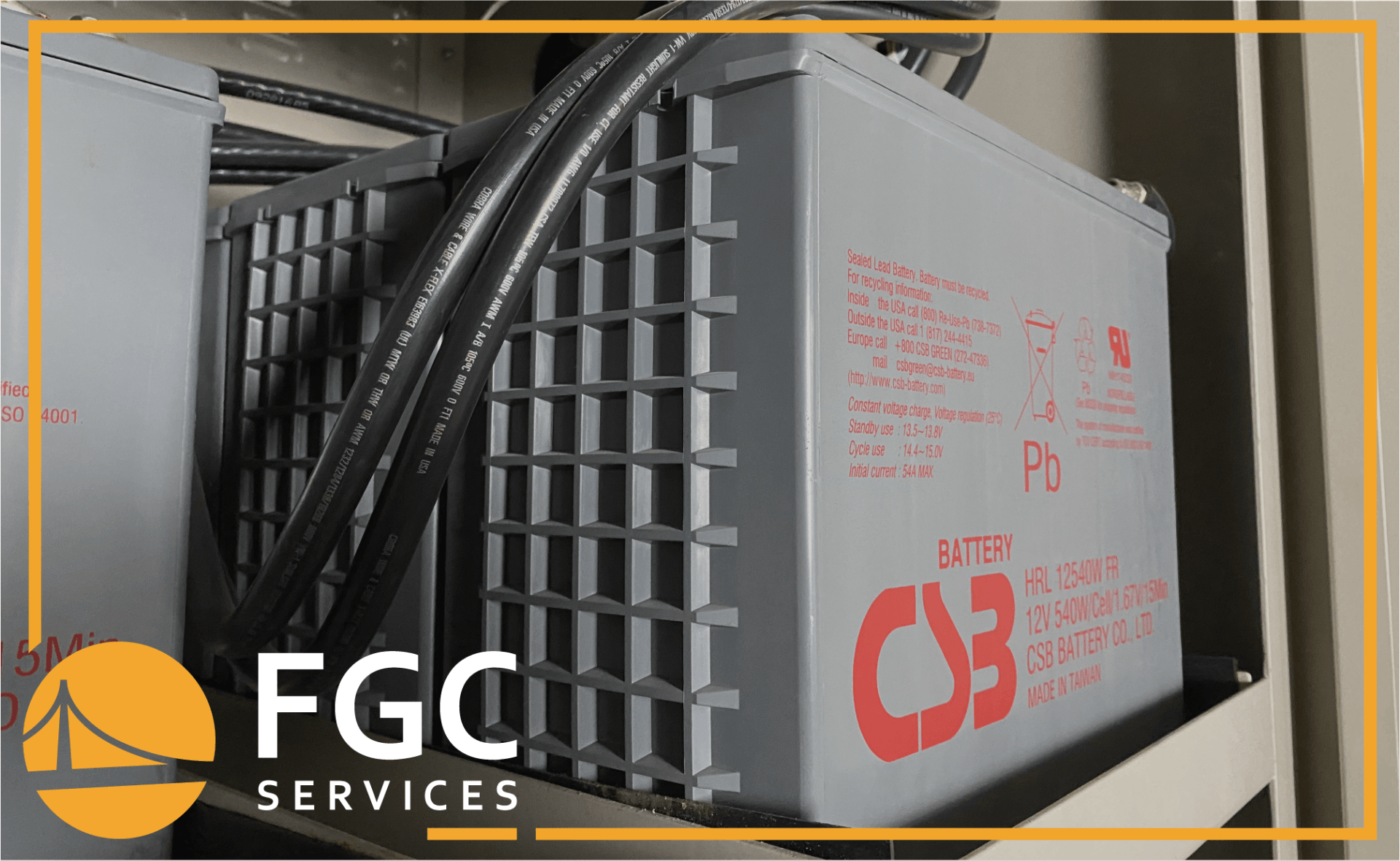Line Interactive vs Double Conversion UPS - Which is Better?
24 January 2023
Share this article:
Uninterruptible power supply (UPS) systems provide backup power to connected devices to ensure safe shutdown and to run equipment for short periods of time until the power can become restored.
UPS systems are also used when there may be power fluctuations that impact operations, as the UPS will regulate the voltage to be more stable to prevent equipment damage. Two types of UPS systems are line interactive and double conversion. Learn more about line interactive vs double conversion UPS units.

What is Line Interactive in UPS?
Line interactive involves the operation of the UPS system, which is referred to topology. It involves how the incoming voltage is treated by the UPS system to the benefit and protection of the devices connected to the UPS that will receive this power. Line interactive UPS have a monitoring system designed to evaluate how power comes in from the main power source. This monitor device located in the UPS will activate when there are spikes or decreases in the power. This function is referred to as voltage regulation to address problems such as surges, brownouts, blackouts, electrical impulses, and other anomalies.
Power anomalies can occur for a variety of reasons, such as a problem with the main power supply coming in, storms impacting power lines that can cause brief outages, or when interior or exterior work is done to power systems. Power fluctuations may also occur when other devices on the power unit pull more energy through the system during peak hours or aggressive operations.
The line interactive UPS system will either boost power or decrease power based on the detected anomaly. When it boosts power, it may allow more energy to pass through the UPS unit and directly to the connected device without undergoing other functions, such as line noise filtering. The device obtains the uninterrupted power in the amount it needs to continue functioning until the energy from the main power line evens out.
In the cases when there is a decrease in power from the main supply, the line interactive UPS will switch from the main power supply to the backup power. The devices can continue operating at full capacity without a slowdown in operations. When the power supply returns to normal operating current levels, the UPS will switch back to the main power supply. Normal transfer time between the main line power and other to the battery may typically take about 2 milliseconds up to 4 milliseconds.
Other functions of a line interactive UPS system include providing pure sine wave output, surge protection, and noise protection. While all line interactive UPS offer surge protection, many but not all units will provide pure sine wave output or noise protection.
What is Double Conversion in UPS?
Double conversion UPS, also called online UPS, provides higher levels of protection from raw paper coming in from a utility line. Similar to line interactive UPS, the double conversion system offers voltage regulation but uses a precise method of power conversion. It takes the incoming AC voltage that may be too high or too low to set parameters and changes it to DC power. Then the DC power is converted back into AC power before being sent out to power connected devices.
This method of power conversion offers a more stable energy supply by isolating equipment completely from the incoming power from the main power supply. It is continuous operation for the UPS unit. In addition, there is no transfer time to switch between backup power and main power because the inverter is automatically supplying the power during the conversion method.
Other functions include having an internal static bypass. This bypass protects connected equipment and ensures they have the power for continued operation in case something occurs to the UPS unit. If the double conversion UPS malfunctions, becomes damaged, or needs maintenance, the connected devices still have the required energy.
Similar to line interactive UPS, a double conversion UPS also offers pure sine wave output, noise protection, and surge protection. All double conversion ups offer these features.
Line-Interactive vs. Double Conversion - What's the Difference?
Line interactive UPS are normally used for main power supplies that offer more clean and stable energy. They provide a reliable backup system at a cheaper price.
In the case of double conversion UPS, they may be used when the main power supply is "dirty." Dirty power is when the delivered power supply is constantly experiencing surges, power fluctuations, voltage variations, and frequency variations. Since the power is experiencing these abnormalities on a daily basis, the double conversion UPS voltage regulation features can clean up the dirty power so it is more stable. They are ideal for mission-critical applications or for operations that will experience poor power quality.
Double conversion UPS are typically more expensive than line interactive UPS but offer more functions and reliability. All double conversion UPS protect devices from abnormalities such as surges, brownouts, blackouts, and electrical impulses. Also, all double conversion UPS offer line noise protection, harmonic distortion protection, and frequency variation protection.
When comparing these types of UPS systems, keep in mind the power needs of the devices. Line interactive UPS is common for applications such as small office environments, home computers, and applications that are not mission critical. Double conversion UPS are suitable for mission-critical equipment and devices that need greater power stability to handle their load draws from the main power supply. Both UPS systems offer the basic protections to manage surges, power fluctuations, and blackouts. However, double conversion provides greater protection at a higher price.
If you need UPS systems, parts, or maintenance service for existing UPS equipment, let Facility Gateway Corporation provide you with the products and services for your operations. We work with companies that have mission-critical power needs and that rely on UPS systems that can provide emergency backup storage power on demand. For more information about line interactive and double conversion UPS systems, and which is suitable for your equipment, contact our company today.
Connect with Us:





